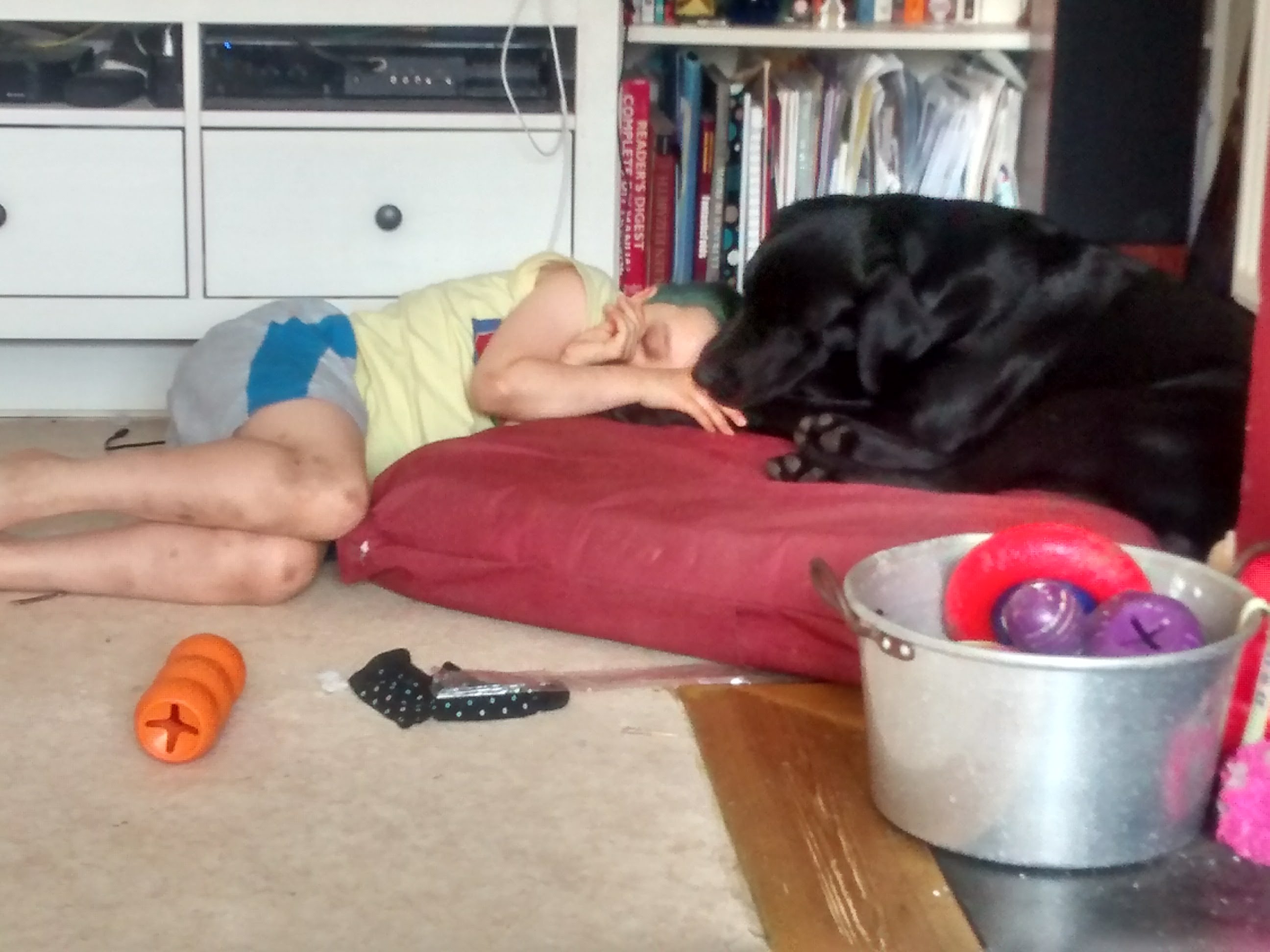Looking back, 2005 marked something of a milestone in Tom’s story. We had pretty much weaned him off the chemotherapy, his heart was stable and we could finally see our little boy’s face.
For a further year, he would crawl and wander around with a “dangly” in his tummy: the PEG tube that had been inserted was either curled up and taped to his belly, or popped inside a little bag that hung around his neck. Whenever came time to feed him (still very often indeed), we would attach an additional tube (extension) and syringe, and wait once again for gravity to deliver the formula to his stomach. The gravity dance was the same as it had been with the NG tube: a little too low and formula came back up and into the syringe; a little too high and it was too fast, and vomit swiftly ensued!
Finally the day came when we swapped the “dangly” for a “button”! Other than the need for another general anaesthetic, this was a day of great celebration. The button was tidy, easy to manage and could be replaced at home in the case of a blockage or other issue. No more dangling tubes!
So… stability! At least in the specific area of how we were able to deliver food to our boy’s stomach. That done, the focus turned all the more intensely to finding the one, magical formula that dieticians and doctors alike told us must be out there: the one white powder that, when mixed with water, would deliver all the nutrition our little boy needed AND stay in his tummy to be digested instead of being vomited all over my dining room table.
We had started with standard baby formula, but quickly moved on to more specialised “feeds”. He stayed on an infant feed for years longer than the recommendation, interspersed with trials of many other anti-allergenic, “pre-digested”, amino acid only feeds. All smelled and tasted worse than the previous ones and none bore any resemblance to milk or food of any human kind.
Fro the time we were prescribed specialise formula (Tom was 8 months old) to my food meltdown with the dietician when he was 3 years old, I never felt that I was feeding my baby.
Throughout this time, Tom continued to vomit – every day, several times a day. Always explosively, always messily. My washing machine was endlessly spinning with clothes, sheets, blankets, muslin cloths and towels covered in foul smelling formula vomit.
Bottles of feed had to be picked up from the chemist monthly. We “earned” the right to an additional recycling bin on our kerb to allow for all those little glass bottles. And every feed time, I felt as though I was medicating my child. At no point did I have any sense that I was feeding him, sustaining him, nurturing him.
You may think, reasonably, that the tube was the barrier to that ability to bond with my baby, but actually the tube was my friend. Its introduction meant the end of dreadful battles trying to feed him earlier. As silly and frustrating as the tube dances around the house could be, I was at least able to ensure he got the nutrition he needed.
But each time I opened a bottle of formula, the smell wafted across my face which screwed up in disgust. And with each new attempt to find that magical recipe, that one formula that would “fix” him, the pharmaceutical magicians seemed to somehow make the smell and taste that much worse.
Which I might not have continued to question, had the vomiting slowed or stopped, or had he gained any appreciable weight. But in those couple of years, he just became iller. His colour varied from grey to yellow and back again, with a very rare day of a pink tinge. His weight did increase, but ever so slowly and the child simply did not grow.
By his third birthday, I was becoming increasingly desperate, tired and …. informed. I had joined online support groups, researched nutrition, tube feeding, other children’s experience of formula. I was fast becoming an expert parent – or a “difficult” mother, depending on the doctor I spoke to.
I became convinced that there was one option that made a great deal of sense to me and that we had not tried: feeding my three year old “real” food. We had tried all the available formulas and he was getting very ill and losing weight. Nobody offered any other solution because this formula, costing around £60 a day, was the end of the line. It was the magic bullet. And somehow it became Tom’s fault that it wasn’t working… because the dieticians had no other option to offer.
I tried to contact my dietician – phone logs and emails will attest to that. She was on leave. So I called Tom’s paediatrician and had a remarkably short conversation with her. Bear in mind that by now I had a very good relationship with her! I explained my reasoning and she responded by letting me know that there was no scientific reason why ordinary food was contraindicated in Tom’s case. She advised me to go slowly and try foods one at a time, much in the same way that weaning babies do.
It was a Friday afternoon and that evening, we began a new stage of our journey with food: the blended diet.
Three days later, Tom stopped vomiting.



 I often ask my children to share something good and something bad about their day.
I often ask my children to share something good and something bad about their day.
